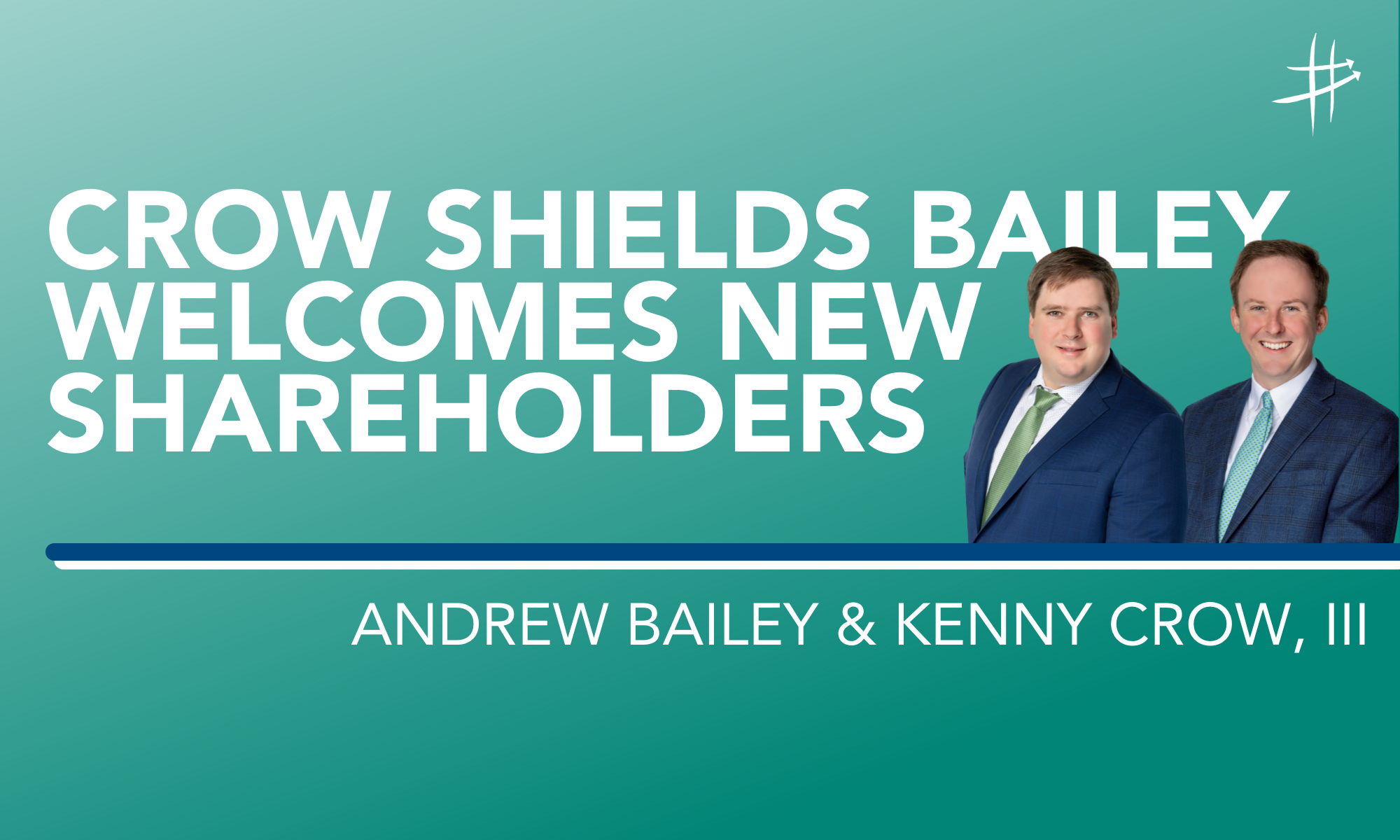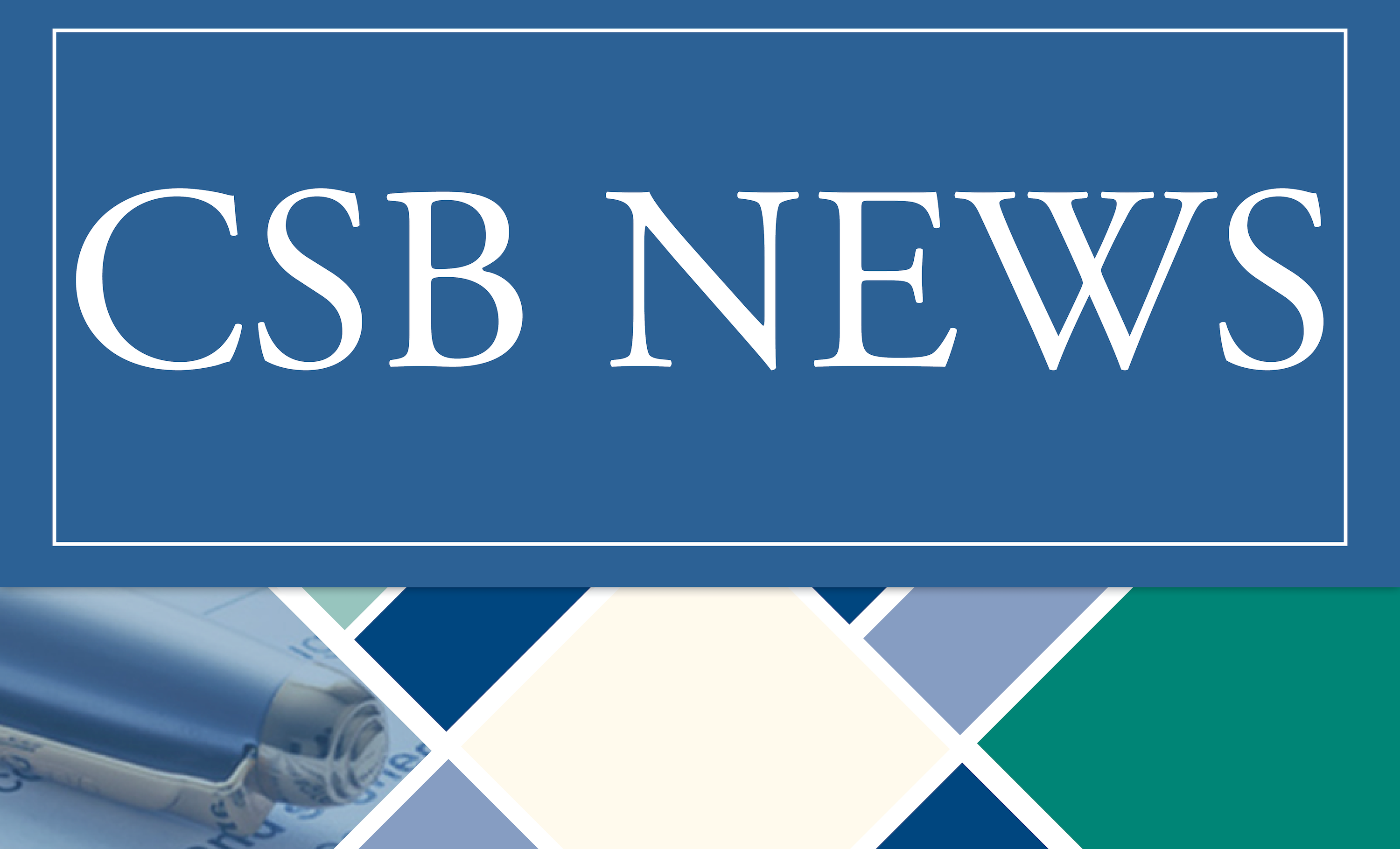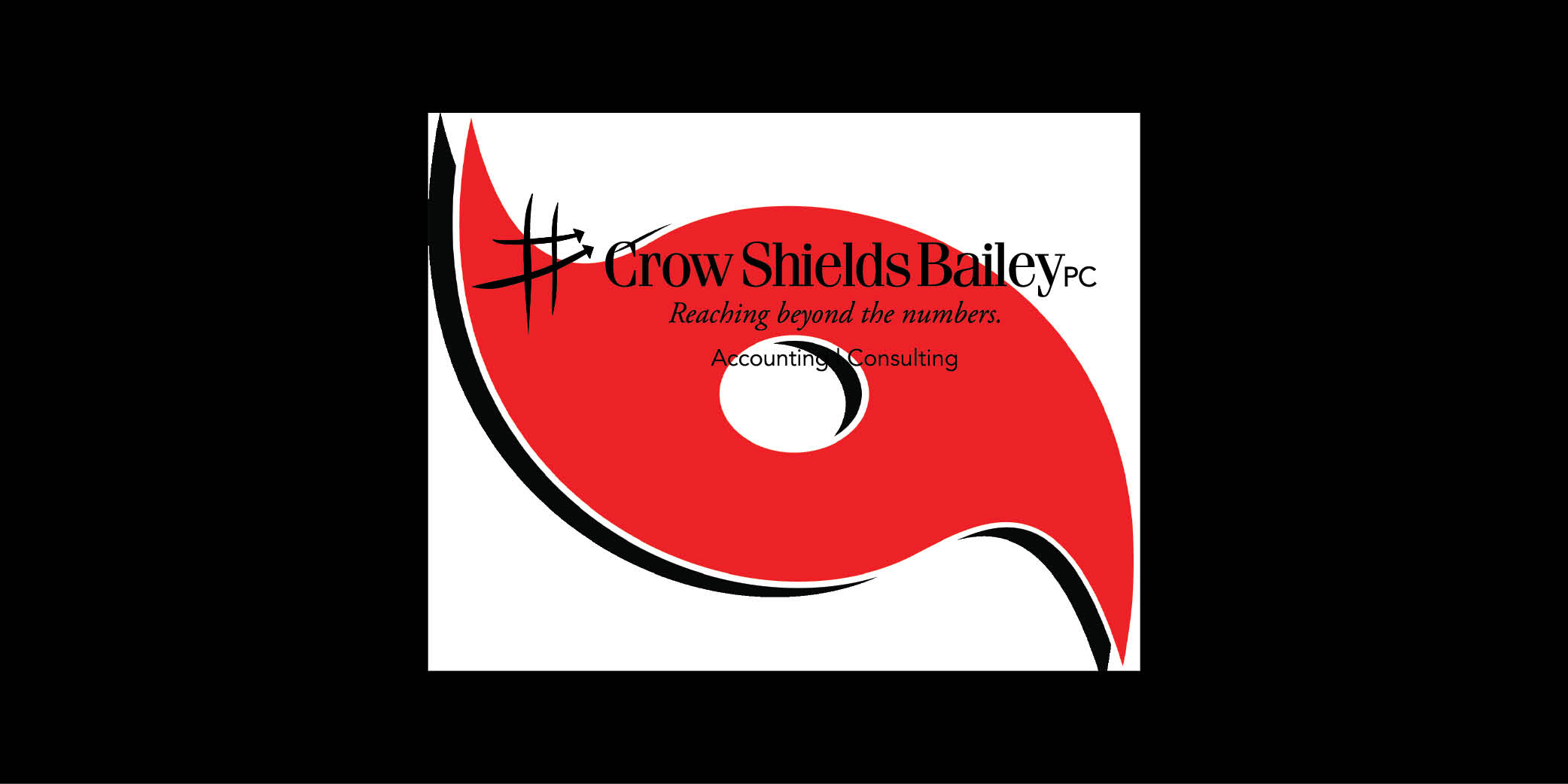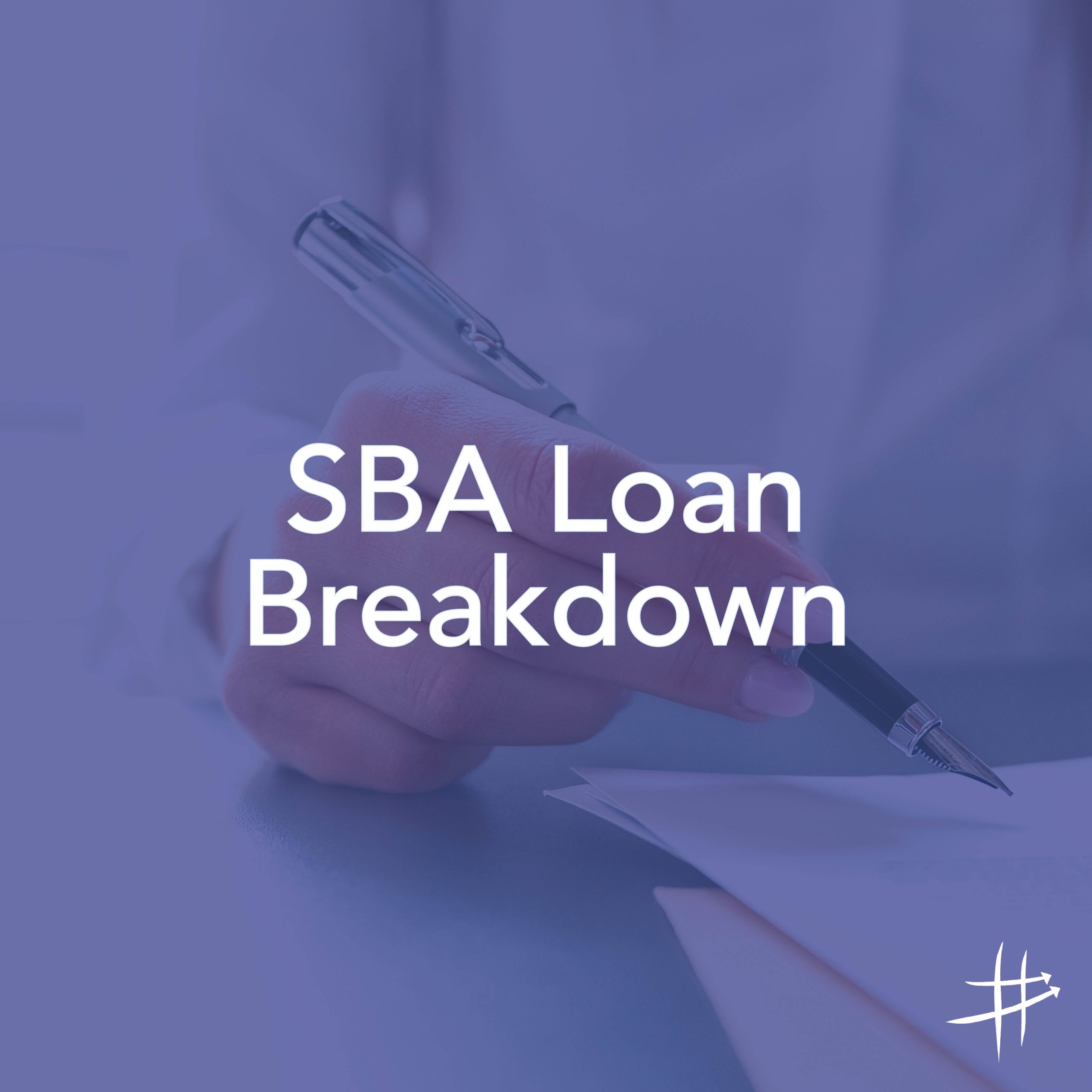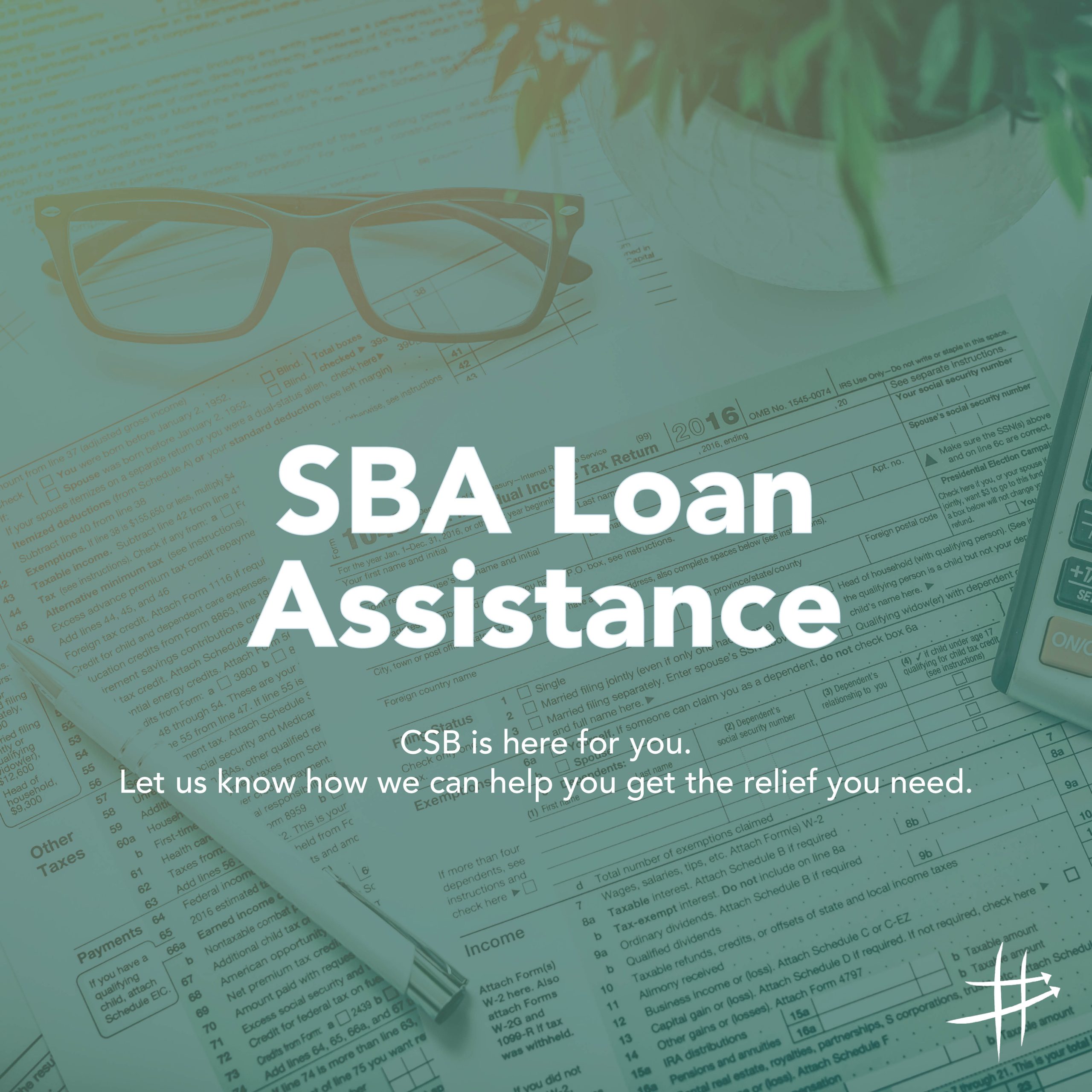(authored by RSM US LLP) The shock to the economy unleashed by the pandemic and the response by workers have radically transformed the wage-earning landscape.
Continue readingHow $15 An Hour Became The De Facto Minimum Wage
(authored by RSM US LLP) The shock to the economy unleashed by the pandemic and the response by workers have radically transformed the wage-earning landscape.
Continue readingBuilding Your Personal Brand
 August 23, 2021
August 23, 2021
Emilee Shuler | Marketing Assistant | Published by Crow Shields Bailey PC
Personal branding is vital for professionals of every age and stage in their career to understand. Professionals should consider branding to be an outward representation to the world of the sum of their values, goals, interests, and skills.
While, in essence, building your personal brand is about selling yourself, it is very important to be genuine and organic in your efforts. The process of learning and developing your personal brand involves an element of self-analysis that will also lead to a great deal of personal growth along the way. Your personal brand is the combination of your own unique identity and your reputation. Intentional and thoughtful personal branding will help you to stand out in a sea of other highly qualified peers.
Looking Inward
The first step is to ask yourself, “Who am I?”
- What are your skills?
- These should include both technical and soft skills.
- What are your interests?
- This should include your professional interests and your personal interests.
- What are your values?
- These should also include both your personal values and your professional values. If these conflict with each other, then branding is not the biggest project you need to be tackling right now.
Next ask your friends, family, and peers, “Who am I?”
- What do they think your skills are?
- What do they most enjoy discussing with you on a personal or professional level?
- What do they believe are some of your values?
Finally, ask yourself what it is you would like to achieve.
- What are your personal and professional goals?
- Do they align with your values, interests, and skills?
It may seem daunting to explore these ideas, but it is a critical step towards building your authentic brand. Personal and professional goals are constantly changing and values and skills evolve as people grow in their lives and careers. You will need to revisit this process often in order to make sure your brand is still an accurate reflection of all of these things.
Building Your Brand
Once you have answered these more introspective questions, it’s time to start building your brand. It is at this point that you will put to work what you gleaned in the beginning of the process. What knowledge, experiences, goals, skills, and passions can you use to promote yourself to employers and peers?
What will be your main avenues of promotion?
- Which social media platforms should you utilize?
- Typically, LinkedIn is the platform that has the most focus on professional achievements and accolades, sharing best practices, and networking and interacting with peers in your industry and others. LinkedIn should be a priority for all professionals.
- Make a point to follow and interact with other leaders in your industry. Share, like, comment, and take part in their conversations. This will give you visibility and help you gain followers organically.
- Even on more casual platforms such as Facebook, Twitter, and Instagram, you should always consider whether the image you are conveying aligns with the values and goals presented by your brand.
- Typically, LinkedIn is the platform that has the most focus on professional achievements and accolades, sharing best practices, and networking and interacting with peers in your industry and others. LinkedIn should be a priority for all professionals.
- Should you consider writing a blog?
- If you feel that you have useful insights to share, a blog is a great way to promote and establish yourself as an industry leader while also sharing helpful knowledge with others.
- What networking opportunities should you utilize?
- Always be on the lookout for continuing education courses, networking events, and any opportunities to have conversations with people. Never underestimate the power of networking. Not only are you gaining and sharing valuable knowledge and making meaningful connections, but your network of peers is also part of your brand and should be a reflection of your values and interests.
How will you stand out from the crowd?
- What makes you unique?
- Use your unique personality, talents, passions, experiences, and abilities to connect with people to differentiate yourself.
- Do you have any professional specializations or certifications that you should highlight?
- How will you stay up-to-date on industry trends?
- Subscribe to reputable sources of information for your particular industry. Use continuing education to bolster your knowledge and stay current with best practices, trends, innovations, etc. This will ensure that your content and conversations are always relevant.
The beginning stages of introspection will guide you in the process of building your brand while simultaneously helping you get to know yourself and your goals better. By defining your identity, developing a strategy for promotion, and letting your personality shine, you can build a very effective personal brand for your personal and professional life.
Crow Shields Bailey’s Andrew Bailey, CPA, ABV Recognized Top Talent 2021

CSB is very proud of Andrew Bailey for being recognized as Business Alabama Magazine and Alabama Society of CPAs‘ Top Talent CPAs for 2021. This is the inaugural year for this award, and it recognizes the top CPAs in the industry. Not only are these professionals being recognized for their work in the industry, but their efforts in their communities as well. Congratulations on a well-deserved award, Andrew!
Restaurant Revitalization Fund
Restaurant Revitalization Fund
The American Rescue Plan Act of 2021 includes $28.6 billion in nontaxable grants for restaurants and restaurant-related businesses. This program will provide relief for many businesses in the restaurant industry, assisting in recovery from 2020 and to make it through the next few months, as states begin to reopen and vaccine distribution increases. Projections indicate some time in May or June of 2021 for a potential operational date.
Guidance is still limited to statutory language, and additional guidance is expected in the coming weeks. For now, this is what we know.
- What type of entity is eligible for a restaurant revitalization grant? Eligible entities include restaurants; food stands/trucks/carts; caterers; saloons; inns; taverns; bars; lounges; brew pubs; tasting rooms; taprooms; licensed facilities or premises of beverage alcohol producers where the public may taste, sample, or purchase products; or other similar places of business in which the public or patrons assemble for the primary purpose of being served food and drink. Any of these entities located in an airport terminal or that is Tribally-owned is also eligible.
- What type of entity is not eligible? Entities above that are state or local government-operated; entities that as of March 13, 2020, own or operate (together with any affiliated business) more than 20 locations, regardless of whether those locations do business under the same or multiple names; entities which have a pending application for or have received a Shuttered Venue Operator Grant; or any entity that is a publicly-traded company.
- What is the definition of “affiliated business?” A business in which an eligible entity has an equity or right to profit distributions of not less than 50%, or in which an eligible entity has the contractual authority to control the direction of the business, provided that such affiliation shall be determined as of any arrangements or agreements in existence as of March 13, 2020.
- How does an eligible entity determine the amount of the grant? The amount is equal to the pandemic-related revenue loss of the eligible entity. The total grant will not exceed $10 million and is limited to $5 million per physical location.
- How does an eligible entity calculate its pandemic-related revenue loss? For an entity that was in operation for the entirety of 2019 and 2020, the pandemic-related revenue loss is calculated by subtracting the 2020 gross receipts of the eligible entity from the 2019 gross receipts of the eligible entity.
For an eligible entity that was not in operation for the entirety of 2019, the pandemic-related revenue loss is calculated by taking the difference between the average monthly gross receipts of the eligible entity in 2019 multiplied by 12 and the average monthly gross receipts of the eligible entity in 2020 multiplied by 12. The Administrator may issue a separate formula to determine this amount.
For an eligible entity that opened during the period beginning on Jan. 1, 2020 and ending March 10, 2020, the grant amount is the amount of eligible expenses incurred less any gross receipts. The Administrator may issue a separate formula to determine this amount.
For an eligible entity that has not yet opened as of the date of grant application, but has incurred eligible expenses, the grant amount is equal to the amount of those expenses. The Administrator may issue a separate formula to determine this amount.
For all eligible entities, the pandemic-related revenue loss is to be reduced by any amounts received from a Paycheck Protection Program (PPP) loan (2020 PPP and 2021 PPP, if applicable).
- How does an eligible entity compute gross receipts? The SBA has not yet issued guidance on how to compute gross receipts. However, an eligible entity may wish to determine gross receipts utilizing the SBA PPP gross receipts criteria to estimate the pandemic-related revenue loss. For a for-profit business, gross receipts are defined for PPP as All revenue in whatever form received or accrued (in accordance with the entity’s accounting method, i.e., accrual or cash) from whatever source, including from the sales of products or services, interest, dividends, rents, royalties, fees, or commissions, reduced by returns and allowances but excluding net capital gains and losses. 2. These terms carry the definitions used and reported on IRS tax return forms.
Gross receipts do not include the following: 1. Taxes collected for and remitted to a taxing authority if included in gross or total income, such as sales or other taxes collected from customers (this does not include taxes levied on the concern or its employees); 2. Proceeds from transactions between a concern and its domestic or foreign affiliates; and 3. Amounts collected for another by a travel agent, real estate agent, advertising agent, conference management service provider, freight forwarder or customs broker.
All other items, such as subcontractor costs, reimbursements for purchases a contractor makes at a customer’s request, investment income, and employee-based costs such as payroll taxes, may not be excluded from gross receipts.
- What costs are considered eligible expenses? Eligible expenses are: Payroll costs (as defined under the PPP), except for qualified wages taken into account in determining the Employee Retention Credit or premiums taken into account in determining the continuation coverage premiums credit under the American Rescue Plan Act of 2021; 2. payments of principal or interest on any mortgage obligation (no prepayment of principal allowed); 3. rent payments, including rent under a lease agreement (no prepayment of rent allowed); 4. utilities; 5. maintenance expenses including construction to accommodate outdoor seating, and walls, floors, deck surfaces, furniture, fixtures, and equipment; 6. supplies, including protective equipment and cleaning materials; 7. food and beverage expenses that are within the scope of the normal business practice of the eligible entity; 8. covered supplier costs; 9. operational expenses; 10. paid sick leave; and 11. any other expenses provided by the SBA Administrator.
- What is the covered period? The period beginning on Feb. 15, 2020 and ending on Dec. 31, 2021, or a date to be determined by the SBA Administrator that is not later than March 11, 2023.
- Is there a priority in awarding grants? Yes, During the initial 21-day period in which grants are awarded, Congress instructs the SBA to prioritize grants to eligible entities that are small business concerns owned and controlled by women, small business concerns owned and control by veterans, or socially and economically disadvantaged small business concerns.
- Is the grant taxable and/or is an eligible entity allowed deductions for covered expenses paid for with the grant funding? The grant is exempt from federal taxation and no expenses are disallowed as a result of the use of the grant funding.
- How does an eligible entity apply? The SBA has not yet announced how to apply. Congress has instructed the SBA to prioritize the ability of each applicant to use their existing business identifiers over requiring other forms of registration or identification that may not be common to their industry.
- What can an eligible entity do now to prepare? An eligible entity should use the SBA PPP provided gross receipts definition to compute the decline in gross receipts and then subtract from that amount any funding received from any PPP loan.
- Does an eligible entity need to make any certifications on the application? There may be more certifications to make than this, but the statute requires an eligible entity to certify that 1. The uncertainty of current economic conditions makes necessary the grant request to support the ongoing operations of the eligible entity, and 2. the eligible entity has not applied for or received a Shuttered Venue Operator Grant.
- Is there a forgiveness application? This is a grant program and not a loan program. However, there may be reporting required to substantiate that the grant was utilized for allowable purposes.
We will release more information once more guidance is released on this matter. If you have any questions, please contact us at 251-343-1012.
Changes To 2020 Form 1099
Changes to 2020 Form 1099
The IRS has a new Form 1099-NEC to report nonemployee compensation for tax year 2020. The IRS has also revised the Form 1099-MISC and rearranged box numbers for reporting certain income.
If your business has paid $600.00 or more in nonemployee compensation to an unincorporated entity in 2020, you will need to report the payment on Form 1099-NEC. If the payments are for legal services or for medical or health care, they must also be reported to incorporated entities.
If your business has paid $600.00 or more in rent (real property, machinery, or equipment) to an unincorporated entity in 2020, it will need to be reported on Form 1099-MISC. However, you do not have to report these payments on Form 1099-MISC if you paid them to a real estate agent or property manager.
A Form W-9 signed by the vendor should be obtained for each entity that you paid $600.00 or more and will need to report on a Form 1099-NEC or 1099-MISC. If possible, you should obtain a Form W-9 from each vendor that provides a service to your business, at the time of service. A Form W-9 can be downloaded from the IRS website at www.irs.gov.
The due date for filing 2020 Forms 1099-NEC is February 1, 2021. The due date for filing 2020 Forms 1099-MISC is March 1, 2021 for paper-filed returns and March 31, 2021 for electronically filed returns.
We will be glad to assist you with preparation and filing of your 1099s. We can also provide a spreadsheet to help input your information. If you would like for us to prepare your 1099s for you, we will need to receive your information no later than January 18, 2021. Please call us at 251-343-1012 if we can be of assistance.
Hurricane Sally Business Casualty Losses
Business Casualty Losses
For partial business losses, the deductible amount of the loss is the value of the destroyed portion or the adjusted basis of the property, whichever is less, reduced by insurance or other compensation received.
For business property that is completely destroyed, the deductible amount of the loss is the adjusted basis of the property minus any salvage value and any insurance or other compensation received or recoverable. This is the case whether or not the fair market value (FMV) of the business property immediately preceding the total casualty is less than the adjusted basis of the property.
Two methods may be used to determine the decline in FMV of property damaged in a casualty:
- Appraised value immediately before and immediately after the casualty to determine the amount of deductible loss.
- Cost of repairing the damaged property to set the amount of the loss.
The IRS has announced relief related to Hurricane Sally. In summary, the filing and payment due dates for various individual and business tax returns due on or after September 14, 2020 have been extended to January 15, 2021. Please note this does not include an extension to pay your 2019 tax liability, it only extends the time to timely file the tax return. The IRS is offering this relief to any area designated by the Federal Emergency Management Agency (FEMA) as qualifying for individual assistance. Currently this includes Baldwin, Escambia and Mobile counties in Alabama, but taxpayers in localities qualifying for individual assistance added later to the disaster area, elsewhere in the state and in neighboring states, will automatically receive the same filing and payment relief. The current list of eligible localities is always available on the disaster relief page on IRS.gov. The Alabama Department of Revenue is also offering similar relief. For more information, please go to the Alabama Department of Revenue Website.
If you have any questions, please call your accountant at CSB or our main office at 251-343-1012.
Crow Shields Bailey Promotes Andrew Bailey, CPA, ABV To Manager

We are very excited to announce that Andrew Bailey, CPA, ABV, has been promoted to Manager. His contributions to our firm have been invaluable. Andrew’s hard work, leadership skills, and his knack for innovation speak for themselves. A graduate of Birmingham-Southern College, he has been with CSB since 2016 and has contributed to many different areas of growth for the firm. Andrew primarily works in tax return preparation and tax planning for businesses, individuals, estates, and trusts; and in business valuation for estate and gift tax, litigation, and merger and acquisition, among other areas.
Andrew is also a very active member in the community. He is the President of the Eastern Shore Chamber of Commerce Young Professionals, Board Member/Treasurer of the Estate Planning Council of Mobile, AICPA NextGen Ambassador for Forensic and Valuation Services, a graduate of the ASCPA Leadership Academy Class VII, and a Junior Achievement Classroom Volunteer at Fairhope High School.
Andrew is a Huntsville native married to Jenny Speir of Fairhope. Andrew and Jenny reside in Fairhope with their son Win and their dog Jack. In his spare time, Andrew enjoys weekends at the hunting camp or on the water, cooking on his Big Green Egg, and spending time with family and friends. He and Jenny also enjoy trying new restaurants around Fairhope, now that they are residents there.
Breaking Down The SBA Loan For Small Businesses: What You Need To Know

Are you a small business that has heard about Small Business Association (SBA) loan, but doesn’t know where to start? Or if you’re even eligible? With all the misinformation circulating about the SBA loan, we have broken down the facts so small businesses can be best prepared during this time, including who is eligible, how to calculate the amount you might receive, how the loan can be used, terms of the loan, the loan forgiveness program, and application.
SBA loans will be expanded according to recent legislation allocating $349 billion to this program. The eligibility requirements are being relaxed to extend credit to small businesses to help maintain payroll and pay bills (ex. rent, mortgage interest, other interest, utilities) during the ‘covered period.’ Regulations (expected to be final by the first of April) are expected to allow almost any FDIC insured entity to process loans and disburse funds on the same day.
ELIGIBILITY OVERVIEW
When is the ‘covered period’? The ‘covered period’ includes loans made between February 15, 2020 and June 30, 2020. Loans issued during this time are ‘covered loans.’
How do I know if I’m an eligible recipient of a covered loan? Small businesses (fewer than 500 employees or under the SBA NAICS industry guideline, whichever is greater) that have been in operations since February 15, 2020 are eligible for the loan. You must have employees that are paid salaries and payroll taxes and/or pay independent contractors (1099-MISC). Note, if you are a sole proprietor or independent contractor, you are also eligible to receive a ‘covered loan’ providing certain documentation.
CALCULATION OF LOAN AMOUNT
What is the maximum loan I can apply for? The maximum amount you can apply for is the lesser amount of the following options:
- Either $10 million, OR a sum of:
- Your average total monthly payments for payroll costs incurred for the year prior to the date on which the loan is made (12-week period if you are a seasonal employer), multiplied by 2.5
- Outstanding amount of existing SBA loans between January 1, 2020 and ending when your new ‘covered loan’ is made available. This will be refinanced under the ‘covered loan.’
(Avg. monthly payroll cost X 2.5) + (Outstanding SBA loans after January 1, 2020)
What do payroll costs include? The sum of payments for any employee compensation; examples include:
- Salary, wage, commission
- Payment of cash tips or equivalent
- Payment of vacation, parental, family, medical, or sick leave
- Allowance for dismissal or separation
- Payment required for group health benefits (insurance premiums)
- Retirement benefits
- State or local tax assessed on compensation
If I’m a sole proprietor or independent contractor, how can I calculate payroll costs? In this situation, payments of compensation cannot exceed $100,000 in one year, and are pro-rated for the ‘covered period.’
What do payroll costs NOT include? The following items are not considered payroll costs:
- Compensation in excess of a $100,00 annual salary, pro-rated for the ‘covered period.’
- Taxes imposed on IRC chapters 21, 22, or 24 during the ‘covered period’
- ANY compensation of non-U.S. resident employees
- Qualified sick leave for which a credit is allowed under section 7001, or qualified family leave wages for which a credit is allowed under section 7003 of Families First Coronavirus Response Act
USE OF LOAN PROCEEDS
What can I use the loan for? The SBA loan can be used to cover the following:
- Payroll cost
- Employee salaries, commissions, or similar compensations
- Costs related to continuation of health care benefits during periods of sick, medical or family leave, as well as insurance premiums
- Payments of interest on any mortgage obligations (not including prepayment of or payment of principle on a mortgage obligation)
- Rent and utilities
- Interest on any other debt obligations that were incurred before the ‘covered period’
TERMS OF LOAN AND THE PROCESS OF SECURING THE LOAN
Who has the authority to delegate a loan? Approved SBA lenders are able to make and approve ‘covered loans.’
What are the borrower requirements? The borrower requirements include a “good faith certification” stating that uncertain economic conditions make the loan necessary to support ongoing operations. These funds will be used to retain workers and maintain payroll, rent payments, mortgage interest payments, and utility payments. It also is in good faith that the applicant DOES NOT have an application pending for a loan under a 7a loan for the same purpose and duplicative amounts, and no other amounts have been received under section 7a loans between February 15, 2020 and December 31, 2020.
Will I be able to obtain credit elsewhere? The requirement that small businesses are unable to obtain credit elsewhere DOES NOT APPLY to ‘covered loans’ during the ‘covered period.’
What about 7(b)(2) loans? 7(b)(2) loans made after January 31, 2020 can be refinanced as part of the ‘covered loan.’
Will there be nonrecourse? Or collateral needed for this loan? SBA has no recourse (or will demand compensation or payment) against individuals, shareholders, members, or partners of an eligible recipient unless the ‘covered loan’ proceeds are used for unauthorized purposes (see above). There are no personal guarantee requirements and no collateral requirements for ‘covered loans.’
What about the interest rate? Interests rates for the SBA loan are not to exceed 4%.
Is there a deferred payment arrangement? Lenders must provide complete payment deferral for a period of not less than six months, including payment of principle, interest, and fees. Deferrals are not to exceed one year.
LOAN FORGIVENESS PROGRAM
Is there a forgiveness amount? Any possible forgiveness amount may not exceed the loan amount, and is calculated as the following amount of costs and payments made during the eight-week period beginning on the date of origination of the ‘covered loan’ (‘covered period’):
- Payroll costs
- Payments on interest of any mortgage incurred prior to February 15, 2020
- Rent obligations on leases in force between February 15, 2020
- Utility payments for which service began before February 15, 2020 – electricity, gas, water, transportation, telephone, or internet access
What is the forgiveness amount limited by? The forgiveness amount is limited by the following:
- Multiplying possible forgiveness amount (as calculated above) by dividing average full-time equivalent (FTE) during ‘covered period’ by either of the following:
- Average FTEs between February 15, 2020 and June 30, 2019
- Average FTEs between January 1, 2020 and February 20, 2020
- Note, average FTEs are calculated as the average number FTEs for each pay period
- Amount of any reduction in total salary or wages of ANY employee during the ‘covered period’ that is in excess of 25% of the total salary or wages of the employee during the most recent full quarter during which the employee was employed before the ‘covered period’
- Note, this does NOT include any employee receiving compensation in excess of $100K
LOAN FORGIVENESS APPLICATION
What should my application include? The application should include documentation verifying the number of FTEs and pay rates during the ‘covered period’ including:
- Payroll tax filings reported to IRS
- State income, payroll, and unemployment insurance filings
- Documentation of expenses such as rent and utilities
The application should also include certification stating:
- Documentation is true and correct
- Amount for which forgiveness is requested was used for authorized purposes
- Any other documentation SBA determines necessary
Crow Shields Bailey is proudly serving as a resource for small businesses to protect for their future during this time. If you have further questions about how the SBA loan can benefit your business, feel free to contact our office 251.343.1012, or visit our Coronavirus Resource Center to stay up-to-date on changes made daily.
Crow Shields Bailey PC – SBA Loan & Loan Forgiveness Information

Our team has been researching around the clock to keep you up to date on the latest details regarding the COVID-19 crisis. What we currently know is that the CARES Act that includes the Paycheck Protection Program (SBA Loans) has been signed by the President, but the banks are still waiting guidance from the SBA. We have spoken with numerous bankers, and although they do not know the specifics of what will be required for the loan application, they have suggested to us that you start gathering the following information. It is imperative that you have this to us as soon as possible. $350 billion has been set aside for this program, but those funds will move quickly because everyone in the country will be applying. As far as we know, loans will be processed on a first come, first serve basis. There may be additional items they will require or the items below may change, but as of today, this is what they think will be required. Please call us at 251-343-1012 with any questions you have so we can have you at the front of the line with your bank.
- Personal and Business Financial
- SBA Personal Financial Statement
- Last 3 years of Personal Tax Returns filed
- Business Financial Info
- Last 3 years of Business Tax Returns filed
- YTD Profit & Loss and Balance Sheet dated 02-15-2020 and most recent if applicable
- SBA Business Schedule of Liabilities
- Business Ownership (Articles of Inc., Operating Agreement, etc.)
- Business Overview/History
- Copies of Business Leases
- Description of how COVID-19 has impacted your business
- Outline income shortfalls
- Have you experienced any supply chain or other business interruptions?
- Have you experienced a delay in receipt of accounts receivable?
- What steps have you taken to anticipate or mitigate risk related to the Coronavirus (i.e. contingency plan, travel ban, work from home, quarantine, business closure etc.)?
- Employees retained during impacted period
- Utility Costs
- All scheduled debt and lease payments made during impact.
- Number of employees, payroll cost and frequency
- Monthly payroll costs for the past twelve months
- Payroll costs include the sum of the following:
- Salaries, wages, or commissions
- Payment of cash tip or equivalent
- Payment for vacation, parental, family, medical, or sick leave
- Allowance for dismissal or separation
- Payment required for the provisions of group health insurance premiums
- Payment of any retirement benefit
- Payment of State or local tax assessed on the compensation of employees
- Payroll costs include the sum of the following:
A summary of the loan program is below. Let us know how we can best serve you.
Maximum Loan Amount During the covered period, with respect to a covered loan, the maximum loan amount shall be the lesser of the average monthly payroll costs incurred during the 1-year period before the date on which the loan is made times 2.5 or $10,000,000, whichever is less.
Loan Maturity Maximum of 10 years from the date on which the borrower applies for loan forgiveness under that section. Covered Loans will be required to be deferred for 6 months to a maximum 12 months
Fees: All SBA Guaranty Fees normally applicable to the 7a loan will be waived
Certification As a condition of receiving a loan under this section, a borrower shall certify under terms acceptable to the Secretary that the borrower— (1) does not have an application pending for a loan under section 7(a) of the Small Business Act (15 U.S.C. 636(a)) for the same purpose; and (2) has not received such a loan during the period beginning on February 15, 2020 and ending on December 31, 2020.
Loan Forgiveness Borrowers are eligible for loan forgiveness equal to the amount spent by the borrower during an eight-week period after the origination date of the loan on the following items: payroll costs; interest payment on any mortgage note incurred prior to February 15, 2020; payment of rent on any lease in force prior to February 15, 2020; and payment on any utility for which service began before February 15, 2020.
- Amounts forgiven may not exceed the principal amount of the loan. Eligible payroll costs do not include compensation to any employee above $100,000 in wages.
- Amounts forgiven will be reduced proportionally by any reduction in employees retained during the eight-week period after the date of the loan as compared to either (i) the period from February 15, 2019 to June 30, 2019 or (ii) the period from January 1, 2020 to February 29, 2020. The borrower can elect the period of time used for the analysis.
- Amounts forgiven will also be reduced by the reduction in pay of any employee beyond twenty-five percent (25%) of their compensation for the most recent full quarter during which the employee was employed.
- Borrowers that re-hire workers previously laid off will not be penalized for having a reduced payroll at the beginning of the period.
- The remaining loan balance of any portion of a loan that is not forgiven will have a maturity of not more than ten (10) years

